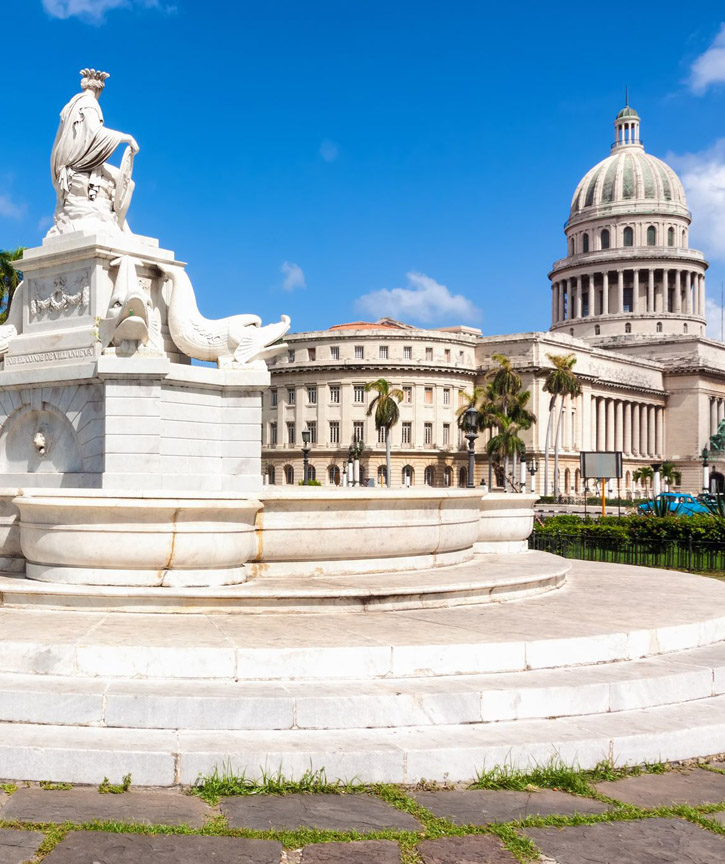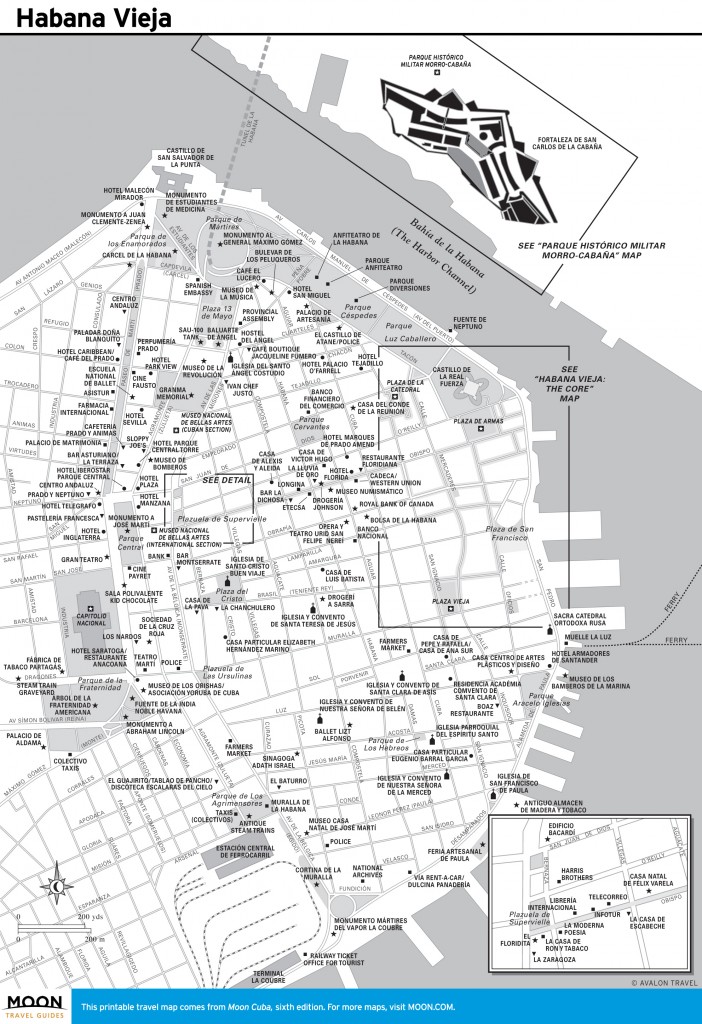The Parque de la Fraternidad (Friendship Park) was laid out in 1892 on an old military drill square, the Campo de Marte, to commemorate the fourth centennial of Columbus’s discovery of America (in the mid-1850s it was the site of the city’s train station). The current layout by Jean-Claude Nicolas Forestier dates from 1928. The Árbol de la Fraternidad Americana (Friendship Tree) was planted at its center on February 24, 1928, to cement goodwill between the nations of the Americas. Busts and statues of outstanding American leaders such as Simón Bolívar and Abraham Lincoln watch over.
The Palacio de Aldama (Amistad #510, e/ Reina y Estrella), on the park’s far southwest corner, is a grandiose mansion built in neoclassical style in 1844 for a wealthy Basque, Don Domingo Aldama y Arrechaga. Its facade is lined by Ionic columns and the interior features murals of scenes from Pompeii; the garden courtyard features ornamental fountains. When the owner’s nationalist feelings became known, it was ransacked and the interior defaced in 1868 by loyalists. It is not open to the public.
To the park’s northeast side is a graveyard for rusting antique steam trains awaiting restoration as museum pieces.

The Fuente de la India marble fountain, also known as La Noble Habana, overlooks the Havana Capitol in Cuba. Photo © Karel Miragaya/123rf.
Bordering the park on its east side, Paseo de Martí (Prado) runs south from Parque Central three blocks, where it ends at the junction with Avenida Máximo Gómez (Monte). Here rises the Fuente de la India Noble Habana in the middle of the Prado. Erected in 1837, the fountain is surmounted by a Carrara-marble statue of the legendary Indian queen. In one hand she bears a cornucopia, in the other a shield with the arms of Havana. Four fish at her feet occasionally spout water.
The Asociación Cultural Yoruba de Cuba (Prado #615, e/ Dragones y Monte, tel. 07/863-5953, daily 9am-5pm) has an upstairs Museo de los Orishas (CUC10, students CUC3) dedicated to the orishas of Santería.
The constitution for the republic was signed in 1901 in the Teatro Martí (Dragones, esq. Zulueta), one block west of the Prado.
On the west side of the Capitolio near the park, the Partagás Cigar Factory (Industria #520, e/ Dragones y Barcelona, tel. 07/863-5766) features a four-story classical Spanish-style facade capped by a roofline of baroque curves topped by lions. The factory specializes in full-bodied cigars such as the Montecristo and, of course, the Partagás, started in 1843 by Catalan immigrant Don Jaime Partagás Ravelo. Partagás was murdered in 1868—some say by a rival who discovered that Partagás was having an affair with his wife—and his ghost is said to haunt the factory. It closed in 2010 for repair and remained so at press time, with little sign of progress; the cigar-making facility has moved to the former El Rey del Mundo factory (Luceña #816 esq. Penalver, Centro Habana), open for tours.

Habana Vieja
Excerpted from the First Edition of Moon Havana.